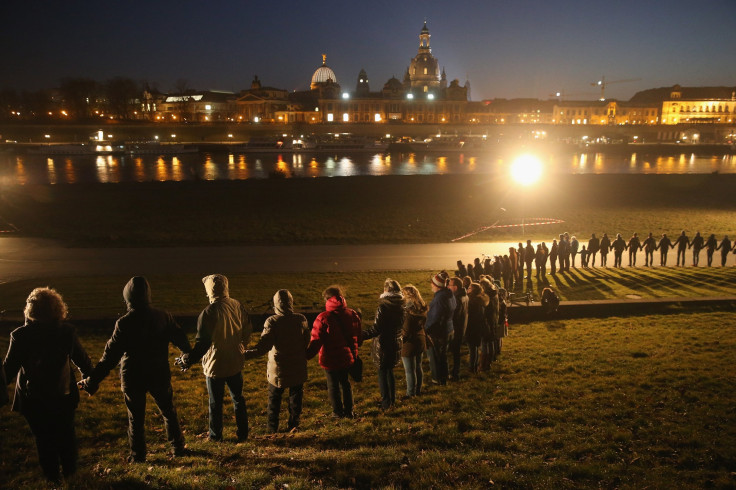Florida Human Chain: Couple Replicates ‘Daisy Chain’ Technique Used By Ants To Rescue Swimmers

Humans can accomplish a lot if they just work together. A husband-wife duo from Florida led by example on Saturday when they urged nearly 80 strangers to form a human chain into the ocean to save a group of swimmers caught in a rip current at Panama City Beach.
Derek Simmons, 26, and his wife, Jessica Simmons, 29, demonstrated presence of mind when they spotted nine swimmers struggling to stay afloat off the coast. The couple was at the beach for dinner. Jessica immediately grabbed hold of a discarded boogie board and began swimming towards the trapped swimmers while her husband stayed behind to gather beachgoers to form a human chain.
Here is the video of the incident posted by Inside Edition.
More and more people joined hands and created a long chain. A couple of young boys and a few adults swam in the ocean to help out the youngsters. The incident happened around 6.30 p.m. EDT, and the lifeguards had left for the day. The people who initially tried saving the boys were also caught up in the unruly waves.
Read: Shark Attacks Swimmer Off Florida's Haulover Beach, Suspected Bull Shark Bites Legs
"We grabbed the kids and tried to start swimming in and it just kept pulling us back," Brittany Monroe, one of the swimmers who tried to help the drowning boys told ABC News. "The water was really strong [on Saturday] but where we were it wasn’t pulling us. When we got to where the kids were, that's when we realized we were stuck."
The human chain grew from five people to 80 people and saved the day. Derek said the gesture of the people coming together to form the chain proved humans had the ability to come together at a time of distress despite the differences and intolerances.
“A lot of people were like, ‘There’s no way we’re getting in the water, we’re going to get swept out,’ but I guess they just swallowed the pride pill and they just got in,” Derek said. “It was pretty amazing stuff for it to be different races, different genders, different ages; everybody got together to help.”
Derek said he thought of using the particular technique because it has already been proven effective in the animal kingdom and is frequently used by ants. “The only thing that popped into my mind was if you’ve ever watched ants, when one of their babies is in trouble and can’t move, they start making a chain in order to pass them down the line to get them to safety,” he said. “That’s the only thing I was thinking of, if we’re arm to arm, we can get them.”
Read: Video Captures Wild Monkeys Attacking Family In Florida
Ants are known to make use of “daisy chains” in different situations — to save their comrades from the harm’s way, transport their buddies’ dead bodies back home or even carry back food that is far greater than their body weight. Ants can be seen building chains to transport a millipede back to their nest in this video, posted by a channel Capsul Tube.
Apart from the chains, ants have been known to form make-shift rafts in minutes by linking their legs and mouths together in order to stay afloat when their homes are flooded by heavy rains. They even have a hierarchy system in place for such events. The queen ant, along with her larvae, sits at the center, on top of the mass of bodies so that they can stay safe and dry, National Geographic reported.
However, human chains are mostly used to register protest or solidarity during a crisis and rarely for survival, unlike ants.

© Copyright IBTimes 2024. All rights reserved.






















